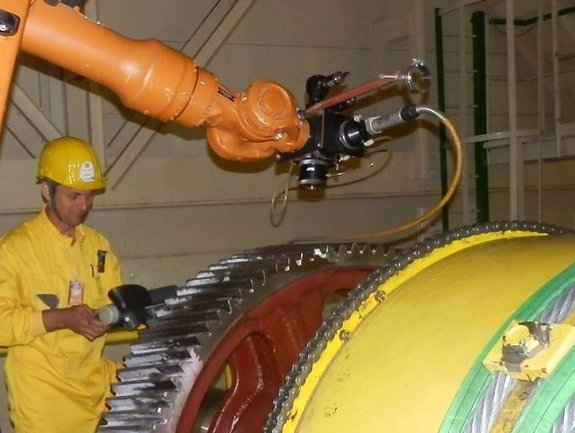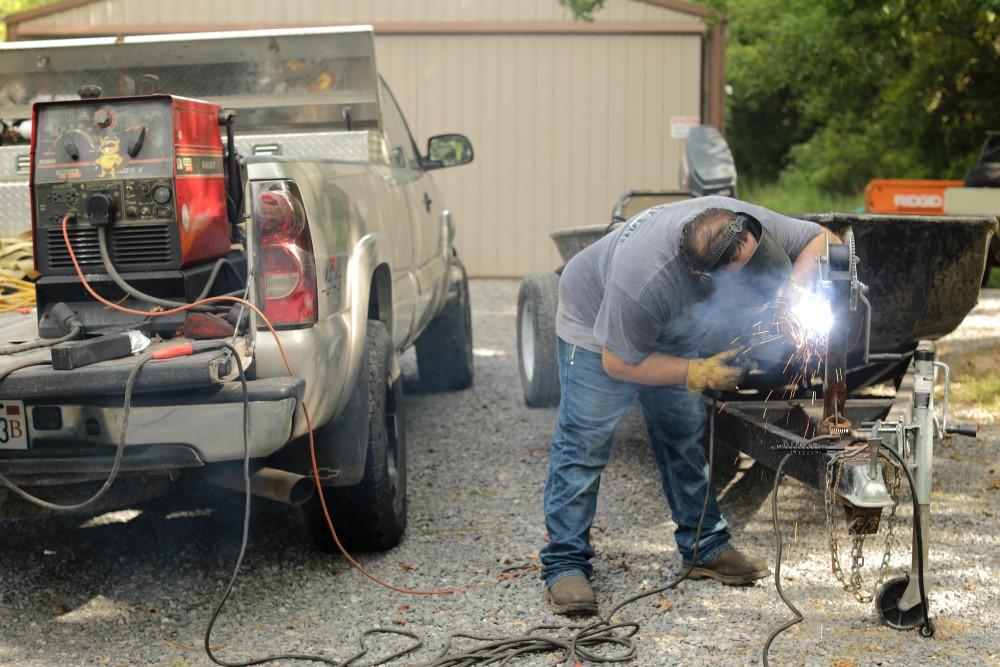How to prevent distortion in Montana Mobile Welding and Repair Welding projects
Wiki Article
Everything about Welding: Key Insights Into Techniques and Ideal Practices for Success
Welding encompasses a variety of techniques, each fit for details materials and applications. Understanding these techniques, such as GMAW, SMAW, and TIG, is vital for attaining ideal outcomes. Furthermore, the best equipment and security techniques can not be ignored. As prep work and troubleshooting play important roles in the welding process, grasping these aspects can substantially boost the top quality of the last item. What are the essential factors that guarantee a successful weld?Comprehending Various Welding Techniques
Welding techniques encompass a variety of methods, each suited to particular applications and materials. Amongst the most typical methods are Gas Metal Arc Welding (GMAW), Shielded Steel Arc Welding (SMAW), and Tungsten Inert Gas Welding (TIG) GMAW, likewise referred to as MIG welding, is popular for its speed and adaptability, making it perfect for slim materials. SMAW, or stick welding, is favored for its simpleness and performance in exterior atmospheres, specifically with thicker metals. TIG welding uses accuracy and control, making it ideal for elaborate work and non-ferrous steels (Montana Mobile Welding and Repair Belgrade). Each technique has its unique advantages and considerations, permitting welders to choose the best approach based on the job's demands, material kind, and preferred end results. Recognizing these methods is essential for effective weldingNecessary Welding Equipment and Tools
While different welding techniques need details skills, the appropriate devices and devices are equally necessary for accomplishing quality outcomes. Essential welding equipment includes welding devices, which vary depending upon the technique-- such as MIG, TIG, or stick welding. Protective equipment, including aprons, gloves, and safety helmets, guarantees safety and convenience throughout the process. On top of that, clamps and fixtures help protect products in position, making sure accuracy in welds. Consumables like welding rods, cable, and shielding gas are also essential components that influence the quality of the weld. Tools such as grinders and cutters help with surface area prep work and post-weld ending up, adding to an expert result. Spending in premium equipment eventually improves the efficiency and performance of welding tasks.Security Practices in Welding
Correct safety and security methods are vital in the welding market to protect workers from prospective risks. Welders have to use suitable personal protective devices (PPE), consisting of safety helmets with appropriate shading, gloves, and flame-resistant apparel. Sufficient ventilation is important to reduce exposure to dangerous fumes and gases produced throughout the welding process. Furthermore, employees should be trained in the proper handling of welding equipment to stop crashes. Fire precaution, such as keeping combustible materials away from the welding location and having fire extinguishers easily available, are required. Regular evaluations of devices and work areas can aid determine prospective hazards prior to they lead to crashes. By adhering to these safety methods, welders can develop a safer working setting and minimize dangers connected with their trade.Preparing Products for Welding
Preparing materials for welding is a vital action that greatly affects the quality and stability of the last product (Montana Mobile Welding and Repair). Proper preparation involves cleaning the surfaces to eliminate pollutants such as dust, corrosion, and oil, which can compromise the weld. Strategies such as grinding, fining sand, or using solvents are typically used to accomplish a clean surface. In addition, guaranteeing that the materials fit with each other snugly is vital; voids can lead to weak welds. It's also crucial to consider the alignment and positioning of the components, as this will affect the convenience of welding and the last result. Selecting the appropriate filler product and making sure compatibility with the base steels is necessary for accomplishing strong, durable welds.Tips for Getting High-Quality Welds
Achieving premium welds calls for attention to detail and adherence to ideal techniques throughout the welding process. Correct joint preparation is important, ensuring surface areas are complimentary and clean from contaminants. Selecting the appropriate filler product and welding technique based on the base steels is essential for perfect bonding. Preserving consistent travel rate and angle while welding can stop problems and advertise uniformity. In addition, regulating heat input is essential; extreme warmth can lead to bending and deteriorated joints. If needed, consistently checking the welds throughout the process enables for prompt changes. Employing ideal post-weld therapies, such as cleansing and tension alleviation, can enhance the durability and stability of the weld, ultimately making certain an effective outcome.Fixing Common Welding Issues
Welding commonly provides challenges that can impact the top quality and honesty of the end product. Usual issues such as porosity, irregular weld beads, and overheating can emerge, each requiring particular repairing strategies. Understanding these issues is crucial for welders to improve their skills and achieve suitable outcomes.more info
Porosity Issues Clarified
Porosity can usually be forgotten, it stays a critical issue in welding that can compromise the integrity of an ended up item. Porosity refers to the visibility of small gas pockets within the weld grain, which can lead and compromise the joint to early failing. This issue normally develops from contaminants, wetness, or inappropriate securing gas protection throughout the welding procedure. To reduce porosity, welders need to confirm that the base materials are clean and dry, utilize appropriate protecting gases, and preserve consistent welding parameters. Frequently checking the devices and environment can additionally assist recognize possible concerns before they materialize in the weld. Attending to porosity efficiently is necessary for attaining strong, durable welds that fulfill high quality standards.
Inconsistent Weld Beads
Irregular weld beads can significantly influence the high quality and strength of a completed item. Different factors add to this problem, including improper traveling speed, inaccurate amperage settings, and irregular electrode angles. When the welder relocates too promptly, a grain may appear slim and lack penetration, while moving also slowly can cause extreme build-up. Additionally, using the incorrect amperage can lead to either damaging or extreme spatter, both of which compromise weld integrity. The welder's technique, such as irregular lantern movement, can also lead to uneven grain appearance. To reduce these problems, welders need to concentrate on maintaining consistent, regulated activities and making sure appropriate devices settings to achieve uniformity in their welds. Uniformity is vital to accomplishing solid and dependable welds.Overheating and Bending Issues
Too much warmth throughout the welding process can lead to significant getting too hot and contorting concerns, affecting the structural integrity of the workpiece. These problems commonly manifest as distortion, which can jeopardize placement and fit-up, making further setting up testing. Elements adding to overheating consist of the option of welding specifications, such as voltage and travel rate, along with the kind of product being bonded. To reduce these concerns, welders need to maintain constant travel speed and proper warm input while keeping an eye on the workpiece temperature level. Furthermore, pre-heating or post-weld warmth therapy can aid alleviate tensions brought on by quick air conditioning - Montana Mobile Welding and Repair. Normal assessment and adherence to ideal practices are essential in avoiding overheating and guaranteeing the longevity and integrity of bonded structuresOften Asked Inquiries
What Are the Profession Opportunities in the Welding Industry?
The welding sector uses varied career chances, including placements as welders, instructors, engineers, and assessors. Specialists can work in production, building and construction, aerospace, and vehicle fields, benefiting from solid demand and competitive salaries in different roles.Just How Can I Boost My Welding Speed Without Sacrificing Top Quality?
To enhance welding rate without compromising high quality, one need to exercise reliable techniques, maintain equipment, maximize settings, and boost hand-eye coordination. Regular training and looking for responses can additionally greatly contribute to achieving quicker, top notch welds.What Accreditations Are Readily Available for Welders?
Many certifications exist for welders, including those from the American Welding Society (AWS), the National Facility for Construction Education and Research Study (NCCER), and numerous industry-specific organizations. These qualifications boost employability and demonstrate ability effectiveness.How Does Welding Influence the Properties of Metals?
Welding influences the homes of metals by changing their microstructure, which can cause changes in solidity, toughness, and ductility. Heat input and air conditioning prices throughout the process substantially influence these material attributes.Can I Weld Dissimilar Metals With Each Other?

Report this wiki page